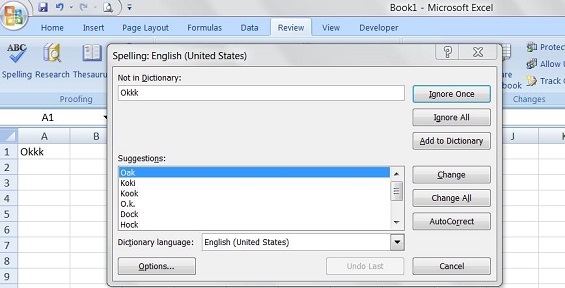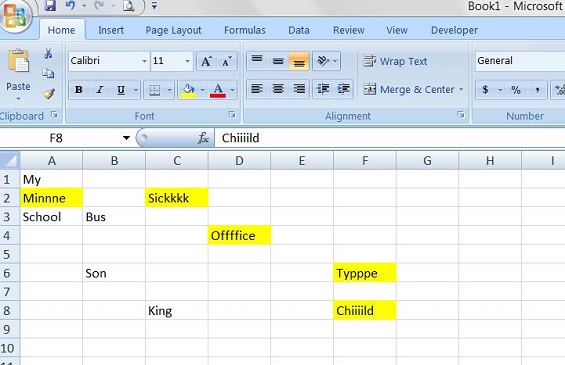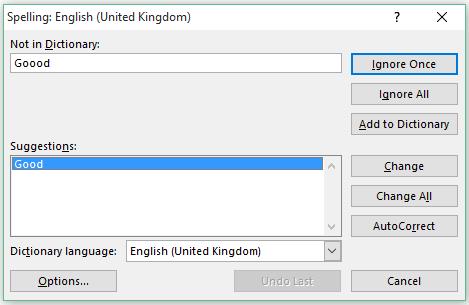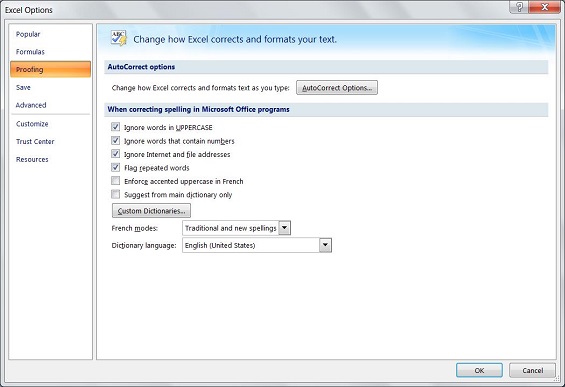Excel is one of the common application used in our day to day office life and business like word, Power point, outlook etc. In the case of word or Power point any spell mistake is visible with a red underline below the word that is misspelled.
However in the case of Excel we mainly deals with figures and such kind of misspelled word are not clearly visible in excel.
Most of the people are not at all aware of spell check feature provided by this application. In this article we will explain how to use spell check feature and how the spell check works.
Where to find Spell Check in Excel
The spell check feature is available under review tab in the ribbon in Excel. We can also use “F7” as short cut key.
When you click on the Spelling option in the review tab (or use “F7” key), it opens the Spell Check dialogue box.

How Does Spell Check Works in Excel
It is important to know is how spell check in Excel works.
If you select cell A1, it will go through all the cells in first row, then move to the second row and check all the cells in the second row (from left to right) and then move to the third row and so on. If it identifies a cell with a spelling error, it displays the Spelling dialogue box.
If you select a cell somewhere else in the worksheet, let’s say C5, then it will go through the cells to the right and then to the row below it. When it is done with checking for all the cells after C5, it will show a prompt that asks the user if he want to continue checking at the beginning of the sheet. Something as shown below:

If the user select Yes, it goes back and checks the remaining cells (which would be A1 to C4 in our example).
To get a better understanding, have a look at this example below (cell shaded are the ones with a spelling error):

As shown, when we begin the spell check with A1, it completes the spell check for all the cells. But when we begin with cell C5, it checks for all the cells from C5 and then asks the user if he/she wants to continue checking from the beginning.
Understanding the Spell Check Dialogue Box
Whenever you run spell check in excel and it finds an error, it shows the Spell check dialogue box (as shown below):

Let’s quickly understand the different options available in the spell check dialogue box:
- Ignore Once: If spell check encounters a word it identifies as an error, but you want to keep it that way, you can click on Ignore Once. This will ignore that error once.
- Ignore All: If excel identifies a word as error, but you want to keep all instances of that word (as is), click on Ignore All.
- Add to Dictionary: If Excel flags a word as error but it is the correct word to be used (may be it’s a name or abbreviation that you use in your company), then you can add it to the dictionary. When such a word is flagged as error and you click on Add to Dictionary, Excel will make that a part of acceptable words and wont flag it again. Note that this word is now part of Excel dictionary and would never be flagged in any of the workbooks.
- Change: When Excel highlights an error, it also shows some suggestions (for example it suggests Good in place of Goood). There can be one or more that one suggestion. Select the suggestion that you want to use and click on Change to apply that.
- Change All: If you click on this button, it will change all the occurrence of the misspelled word with the selected suggestion.
- AutoCorrect: This option will change the misspelled word with the selected suggestion, and also add it to the auto correct list. This means, that next time you type the same misspelled word, excel would automatically convert it into the suggestion that you selected.
- Dictionary Language: You can change the dictionary language using this drop down.
Here are some default settings in Spell Check in Excel:
- It ignores words which are in Upper Case. For example, if you have the word HELLOOO, it will not be flagged as an error.
- It ignores words that contain numbers. For example, if you have the word Hello123, it will not be flagged as an error.
- It ignores internet and file addresses.
- It DOES NOT ignore repeated words. For example, if you have the text – Hello, How areare you? – then it the additional are will be flagged as an error.
You can change these default setting by clicking on the Option button in the Spell Check Dialogue box.
It will open the Options dialogue box where you can make the necessary change.



No comments:
Post a Comment